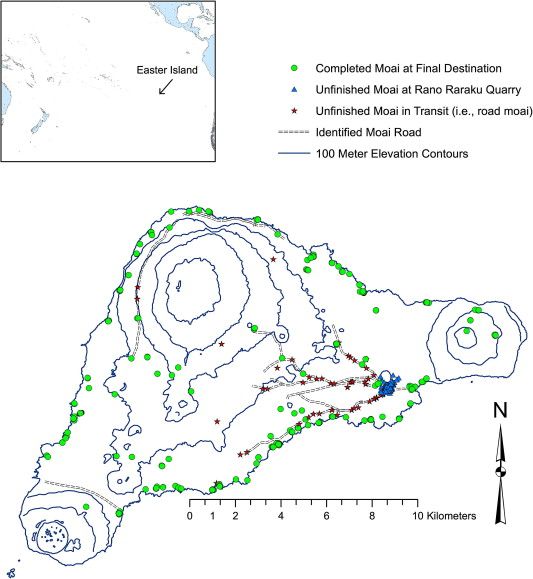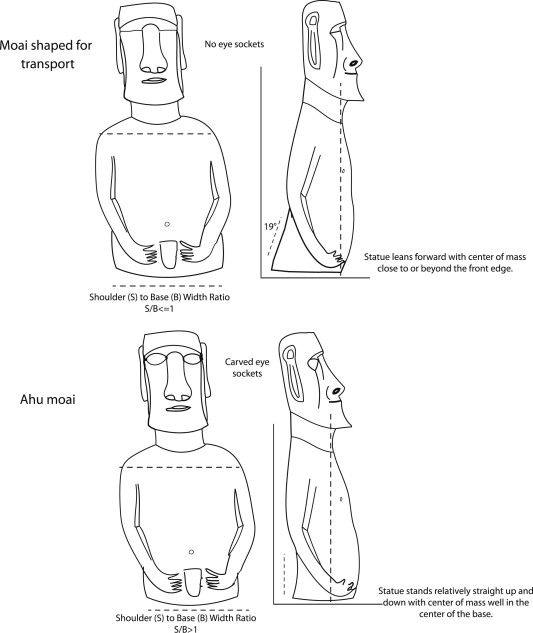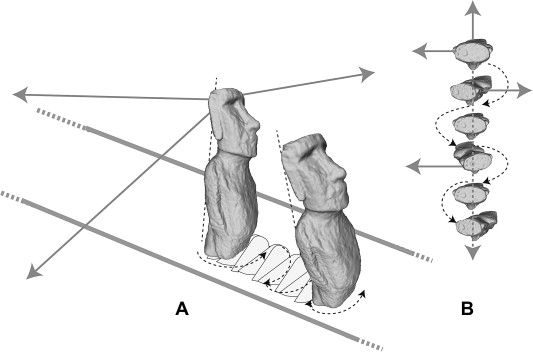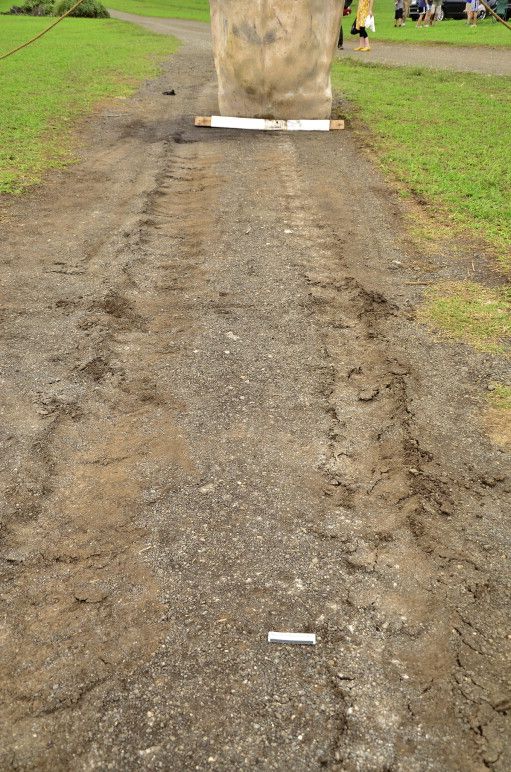How Easter Island moais walked their way to their final destinations

Easter Island is an amazingly mysterious destination due to the moais, megalithic statues resembling human figures that were built by the Rapa Nui people between the 12th and 17th centuries. These magnificent volcanic rock statues can be found all over the island, mainly in the coastline. There are over 1 000 of them, and some must have been transported for more than 15 km in order to reach their final destination (Figure 1).

The heaviest of them weigh more than 80 tons and are up to 10 m tall. How did they transport these huge bulks from the quarries where they were carved to their final destinations in a treeless island? Researchers have determined that the island was deforested around the 16th century, so they still could build sledges or move them on rolling logs. There are even pseudoscientists that claim an extra-terrestrial help for the transport.
Oral tradition amongst the Rapa-Nui people tells that the statues could “walk”, but this very same tradition does not explain the underlying mechanism on this walking, or if it was a metaphor at all. It has been demonstrated that the statues were transported in a vertical position, thanks to the analysis of the moaisabandoned half way to their destination 1. However, a recent study 2 has been able to experimentally prove this astonishing theory: the moais went “walking” from the sculpting quarries to their destination point.
‘Walk’ mechanism
In order to make the moais walk, they used three ropes tied to the neck of the figure: one to the left, one to the right and the last one backwards in order to keep it balanced. The carriers made the megalith lean slightly to one side, while the opposite side pulled the rope towards their side. This way a relatively small group of people were able to tilt the moai in a cyclic basis.
In order to advance forward, it was necessary to sculpt the statue with specific geometric properties: the centre of mass in the longitudinal direction should be positioned in the front of the statue, thus having a natural tendency to fall over his face (Figure 2). Combining this behaviour with the tilting movement, for each tilt cycle the statue leaned slightly forward, controlled by the central rope. This meant that at the end of each cycle the whole statue pivoted around the corner it was sitting, generating a walk-like movement (Figure 3) that displaced the moai slowly, but with very little effort.

This mechanism is splendid: simple enough to be performed by a small group of people, cheap enough as it only requires three ropes, and extremely efficient compared to other means of transport.

Efficiency of the different transportation means
As we have highlighted before, previous theories of how these huge statues were transported included the use of auxiliary elements between the load and the trail, such as i) wooden sledges or ii) logs used as wheels or rollers. Why are these options less efficient from a mechanical point of view? The only reason is the interaction between the moving parts and the soil.
In order to move a load sliding on a surface we need to exert a force on the load greater than the friction coefficient times the normal force on the sliding surface. This friction coefficient can be almost zero, e.g. an icy surface; or, in the case of the moais, the soil path might have a friction coefficient greater than 0.8. So for moving a 50 ton statue, at least 40 tons must be exerted pulling the whole bulk forward. This is not operative at all.
In order to avoid the sliding between the two surfaces, rolling logs can be used between the statue and the soil. Then, the force needed to pull the load would be much less, as the sliding surface becomes a rolling surface. However, rolling on soil with very high loads would stick the logs on the path, making their advance extremely difficult. And it is not consistent with the moais being transported in a vertical position.
The walking moai solution avoids the friction forces on the contact surface because the sliding is extremely small. When the statue is sitting on one side and pivoting around one “foot” there is not linear sliding in the contact surface. There is actually an angular sliding that will create much lower friction forces on the surface: on the centre of the contact area, the stress will be very high, but the linear sliding is null. As we move outwards the contact patch, the normal stress decreases as the linear sliding caused by the angular displacement increases, generating small friction forces. Moreover, this friction forces are exerted by the gravity: remember that the statue is always trying to lean forward and fall on its face due to the position of the centre of gravity; so the manpower is only used for avoiding the statue fall and break apart.

This is a very nice discovery in archaeology while it is not a breakthrough in mechanical engineering. Nevertheless, it is a very good demonstration of how an, allegedly, extremely difficult displacement could be performed using the mechanical properties of your system in your favour. We don’t need aliens in order to explain how these huge sculptures were moved. See it for yourself:
References
- Carl P. Lipo, Terry L. Hunt, “Mapping prehistoric statue roads on Easter Island” Antiquity, 79 (2005), pp. 309–317 ↩
- Carl P. Lipo, Terry L. Hunt, Sergio Rapu Haoa, “The ‘walking’ megalithic statues (moai) of Easter Island”, Journal of Archaeological Science, 2012 http://dx.doi.org/10.1016/j.jas.2012.09.029 ↩
5 comments
Amazing!
The idea is so simple that it seems obvious that it was like that. It reminds me of some occasions when trying to move a huge fridge or washing machine, you always come up sliding in angle making short but continuos advances.
However, the video is impressive, and I can imagine a primitive inhabitant of the island staring from the distance and watching moais walking, the effect is outstanding!
Very interesting article.
Thanks for the comment, drlitos!
It is exactly as you said: when moving a huge furniture piece or a fridge we usually balance it on one corner and advance it in several steps. Actually I thought about writing it in the article but eventually I forgot about it!
But it seems quite difficult to maintain the balance of those huge statues… I guess that the work of the back-rope handlers is more difficult than it seems!
[…] un misterio. Hace algunos años, sin embargo, investigadores de California, Hawai e Isla de Pascua, propusieron, y experimentaron, un mecanismo de movilización de los moais que les permite “caminar” con mínimo esfuerzo, e involucrando una pequeña cantidad de […]
[…] them despite the huge technical difficulties they had to fight against. The pyramids, as for the Moai statues at Easter Island, didn’t have their materials available in-site where they were built, but had to transport […]
[…] See endnotes at source. […]